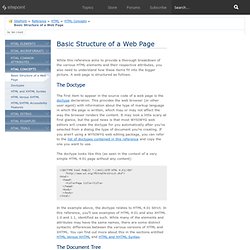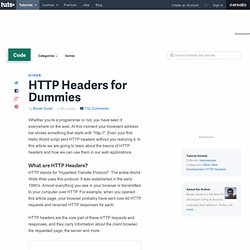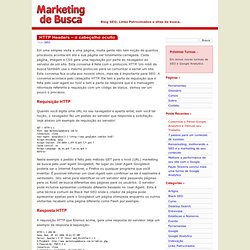

Learn HTML5, CSS3, Javascript - video style tutorials. HTML5 & CSS3 Fundamentals: Development for Absolute Beginners. HTML5 & CSS3 Fundamentals: Development for Absolute Beginners. Developer Network. From game jam to mobile and Firefox OS I love participating in game jams, where game developers get together to craft games in a very short amount of time.

I thought it would be cool to take one of my past Game Jam games, Metal vs Hipsters, and port it to the mobile web and Firefox OS. Adapting ... Web Push notifications from Irssi Our main communication tool at Mozilla is IRC. I’m running an IRC client called Irssi under screen on a server constantly connected to the network. It’s a close-to-perfect solution with only two outstanding issues for me. Getting Started. Dev.Opera. Basic Structure of a Web Page. While this reference aims to provide a thorough breakdown of the various HTML elements and their respective attributes, you also need to understand how these items fit into the bigger picture.

A web page is structured as follows. The Doctype The first item to appear in the source code of a web page is the doctype declaration. This provides the web browser (or other user agent) with information about the type of markup language in which the page is written, which may or may not affect the way the browser renders the content. It may look a little scary at first glance, but the good news is that most WYSIWYG web editors will create the doctype for you automatically after you’ve selected from a dialog the type of document you’re creating. The doctype looks like this (as seen in the context of a very simple HTML 4.01 page without any content): <! In the example above, the doctype relates to HTML 4.01 Strict. The Document Tree Figure 1. Html Here’s an example of an XHTML transitional page: <!
Head <! Guide to your first webpage. Alright, let's do it, your very first webpage!

It won't be too difficult. All you will need to do is copy some code we provide, save it in a file, and view the result in a web browser (A web browser is the program you use to view webpages..in case you didn't know). Creating your first webpage The code itself The code used to create webpages is written in a language called HTML which stands for Hyper Text Markup Language.
Software needed All you need to create webpages is a simple text editor. Creating the page Copy the following HTML code into notepad: <html><head><title>My first webpage! NOTE: The webpage may not function correctly if you don't copy the code exactly as it is here, so please make sure to do that. HTTP Headers for Dummies. Whether you're a programmer or not, you have seen it everywhere on the web.

At this moment your browsers address bar shows something that starts with " Even your first Hello World script sent HTTP headers without you realizing it. In this article we are going to learn about the basics of HTTP headers and how we can use them in our web applications. What are HTTP Headers? HTTP stands for "Hypertext Transfer Protocol". The entire World Wide Web uses this protocol. HTTP headers are the core part of these HTTP requests and responses, and they carry information about the client browser, the requested page, the server and more. Example When you type a url in your address bar, your browser sends an HTTP request and it may look like this: First line is the "Request Line" which contains some basic info on the request.
After that request, your browser receives an HTTP response that may look like this: The first line is the "Status Line", followed by "HTTP headers", until the blank line. Firebug. HTTP Headers – o cabeçalho oculto. Em uma simples visita a uma página, muita gente não tem noção de quantos processos acontecem até a sua página ser totalmente carregada.

Cada página, imagem e CSS gera uma requisição por parte do navegador ao servidor de um site. Esta conversa é feita com o protocolo HTTP. Um robô de busca também usa o mesmo protocolo para se comunicar e varrer um site. Esta conversa fica oculta aos nossos olhos, mas ela é importante para SEO. A conversa acontece pelo cabeçalho HTTP. The HTML5 / CSS3 Zone.